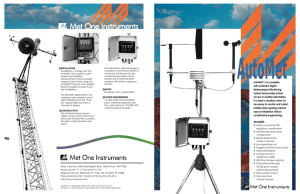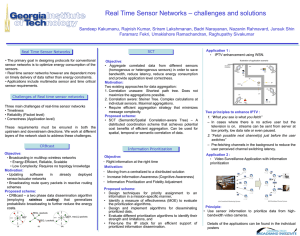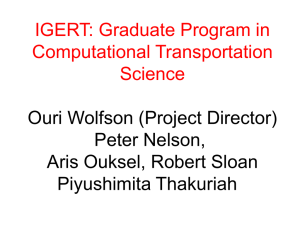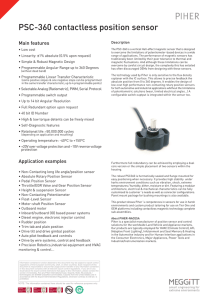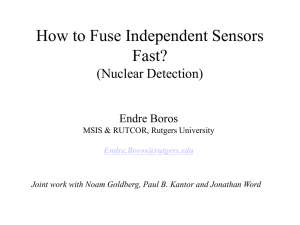From Motes to Java Stamps: Smart Sensor Network Testbeds Abstract
advertisement
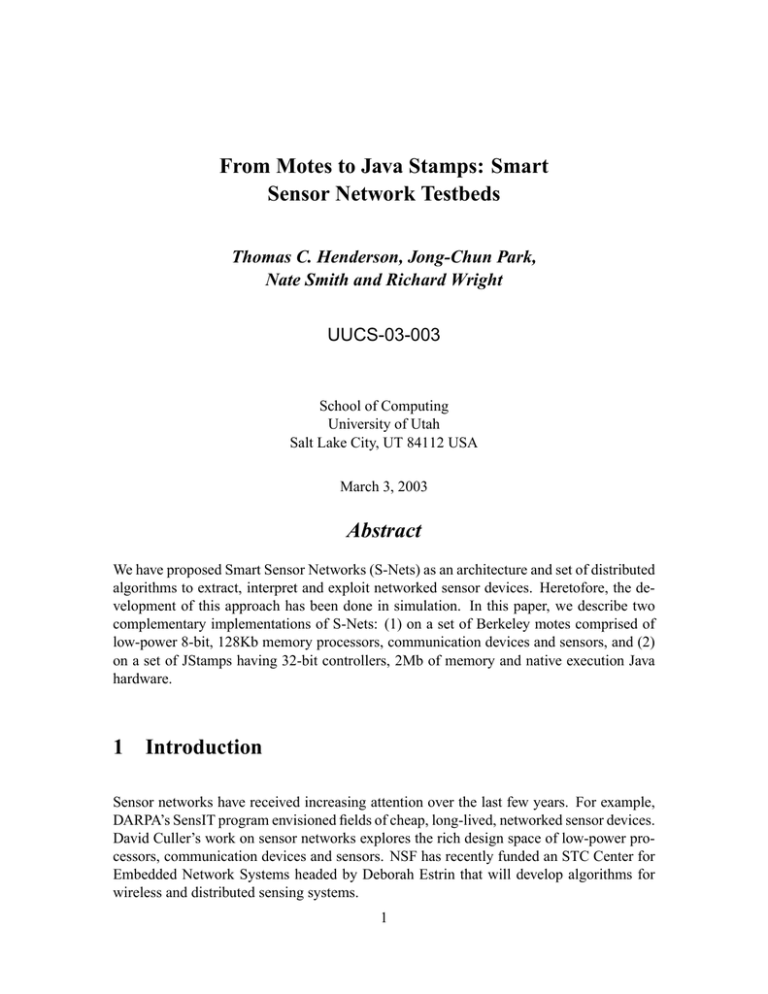
From Motes to Java Stamps: Smart Sensor Network Testbeds Thomas C. Henderson, Jong-Chun Park, Nate Smith and Richard Wright UUCS-03-003 School of Computing University of Utah Salt Lake City, UT 84112 USA March 3, 2003 Abstract We have proposed Smart Sensor Networks (S-Nets) as an architecture and set of distributed algorithms to extract, interpret and exploit networked sensor devices. Heretofore, the development of this approach has been done in simulation. In this paper, we describe two complementary implementations of S-Nets: (1) on a set of Berkeley motes comprised of low-power 8-bit, 128Kb memory processors, communication devices and sensors, and (2) on a set of JStamps having 32-bit controllers, 2Mb of memory and native execution Java hardware. 1 Introduction Sensor networks have received increasing attention over the last few years. For example, DARPA’s SensIT program envisioned fields of cheap, long-lived, networked sensor devices. David Culler’s work on sensor networks explores the rich design space of low-power processors, communication devices and sensors. NSF has recently funded an STC Center for Embedded Network Systems headed by Deborah Estrin that will develop algorithms for wireless and distributed sensing systems. 1





